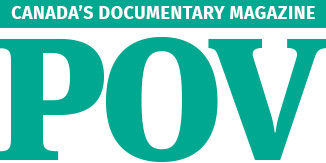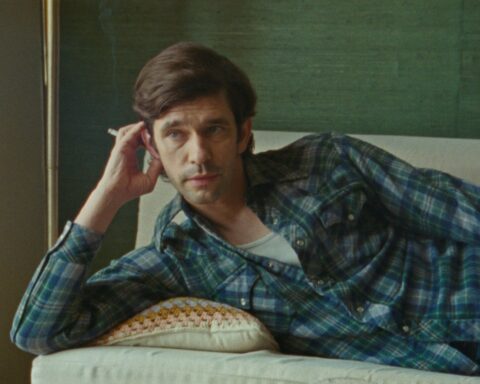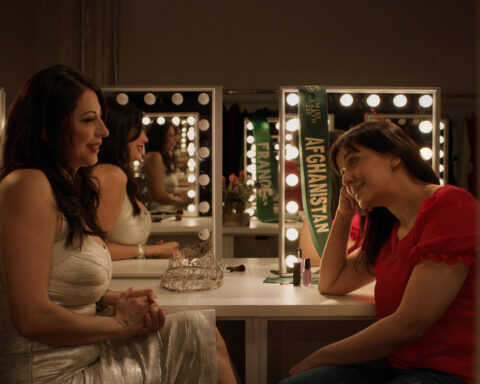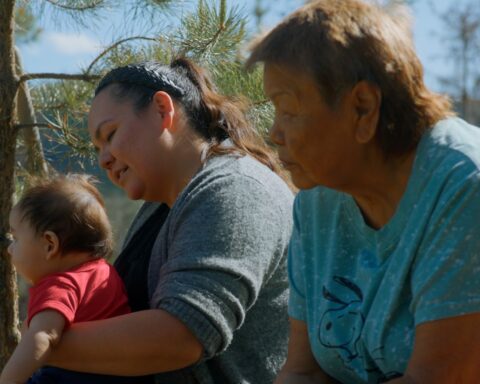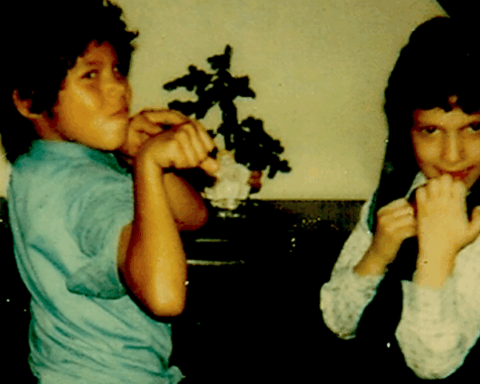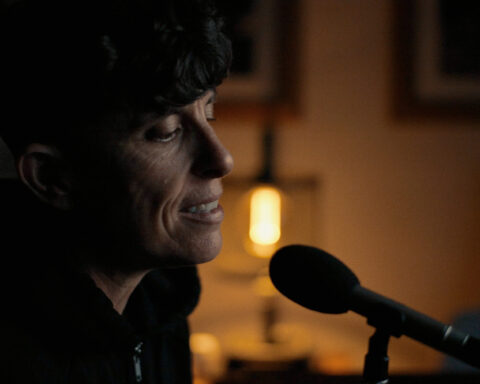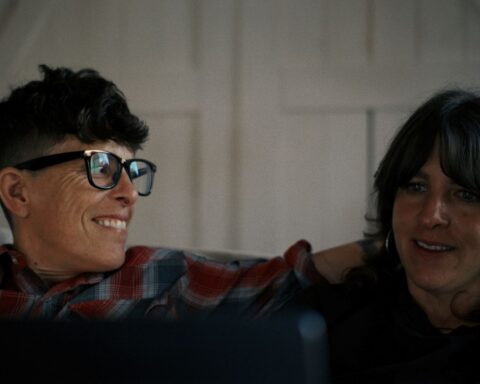Kandahar Journals is a fast-paced and riveting documentary about Canada’s military involvement in the War in Afghanistan against the Taliban, from the perspective of internationally acclaimed photojournalist Louie Palu in the years 2006-2010. Although the war marked Canada’s historic shift from a peacekeeping role to active military combat, surprisingly few journalists covered it in any depth, and with this film provides an important account of this part of our current history. Palu weaves a personal narrative based on the journals that he kept during his numerous trips to the front lines, in and around the city of Kandahar, and shows that in fact there were no front lines, and that it was impossible to differentiate the enemy from within the general civilian population. Through graphically direct photographs he documents acts of carnage so unspeakable that they are difficult to watch. Standing shoulder-to-shoulder with Canadian and coalition soldiers, he is able to film them from close range as they scramble to take cover and return enemy fire in rarely documented sequences that are action-packed with life-or-death drama. The tension and fear of the soldiers is palpable, as Palu gives us front row seats to the “theatre of war,” later contrasting this with an evocative series of black and white images of more mundane moments in which the humanity of individual soldiers emerges among the absurdity of war, such as the soldier who seems to be awkwardly balancing some grapes with his bullets strapped to his chest. Ultimately in his superbly honest account Palu questions whether words and images can actually convey the absurdity and complexity of war.
Recently Louie Palu spoke with Vincenzo Pietropaolo and took him behind the scenes of Kandahar Journals.
POV: Vincenzo Pietropaolo / Palu: Louie Palu
POV: Film making is one of the most collaborative arts. Who did you work with in making Kandahar Journals?
Palu: Of course, this film was a team effort and I could in no way have made it without my Co-Director Devin Gallagher, Writer Murray Brewster, Editor Lawrence Jackman, Consulting Editor and Art Director Marc Robichaud and finally Manuel Hidalgo for his phenomenal soundtrack. Additionally, filmmakers Jennifer Baichwal, Nick de Pencier, Rama Rau and Producer Daniel Iron acted as invaluable advisors making a significant contribution to the successful completion of the final edit.
POV: What made you interested in going to Kandahar as a photojournalist?
Palu: I think at first my interest in going to cover the war in Kandahar was because Canada was going on a combat mission for the first time since the Korean War. However I realize now that was only an entry point to something deeper. While making the film I came to understand that almost every in-depth project I have worked on explores my own identity as the son of immigrant Italians who experienced the horrors of the Second World War. Hearing about my parents’ experience in the Second World War as a child is what I really wanted to learn about. I wanted to know their trauma and how that shaped
them.
POV: What was the nature of their trauma?
Palu: This is a simple but tough question to answer. For years my parents maintained a very general narrative of witnessing war as children without too many details, but as the years progressed and after I got back from Afghanistan they began telling me more details like of aerial bombardments of the region around my mom’s town, and my father having a gun pointed at him as a child (he could not have been older than 4 years old) by a soldier while his father was taken away by the Nazis.
However, I think the story that disturbs me the most is one of my father’s close friends, who was older than him being made to fight dogs by camp guards in a prison camp for food. The older I get the harder those stories hit me, especially having personally known these human beings I love and the suffering they experienced. Sometimes these stories send me to a darker place than my own experiences from war.
POV: You went to Kandahar as a photojournalist, cinematographer, sound recordist, and journal writer. On a practical level how did you manage all these roles?
Palu: I really only went to Kandahar as a photojournalist as my primary goal, I had no intention of making a film at first. I began shooting video after a CBC cameraman had been seriously wounded by a land mine in 2007. The Television Pool in Kandahar had less access to video of combat in 2007 because of restrictions on them leaving the main base. Graeme Smith from The Globe and Mail loaned me his video camera and I took it with me on a combat operation in which I recorded a dramatic battle. What really struck me was the audio that emerged.
POV: In what way?
Palu: Audio was quite simple though, if it was an interesting sound that I thought I could use, I documented it with a microphone as if it was a camera. I had always been interested in the moving image and had been making Super 8 short films for years. However, new digital video technology and the simplicity of editing it immediately made it very portable, accessible and economical. After that I purchased a small video camera and returned in 2008 with the intention of making short films, several were produced on the web for The Atlantic Magazine titled “Unconventional Warfare.”
At the time DSLR cameras that shot video were non-existent. What made all of this diverse content gathering possible was making long term trips there, which ranged from 4-7 months per trip several times over 5-years. Slowly, covering the war became more about creating an archive of materials I could draw upon to create content.
I started keeping notebooks for captions, but the emotional difficulty of covering the war caught up to me and so I began keeping personal journals as an outlet to try to remain mentally healthy and focused. I picked some days for stills and some solely dedicated to video and committed to only one at a time. What emerged is what an archivist at the Library and Archives of Canada told me is the largest combined archive of video, photographs and audio of Canadians at war ever created by a single Canadian photographer. Though while I was in Kandahar I had no idea that is what would emerge from my fieldwork.
POV: I’d like to raise the issue of embedding for journalists. Were you embedded, and what does it mean to be embedded?
Palu: For those who don’t know, embedding is an official process in which a journalist spends dedicated time attached to a military unit and follows them on everything they do including combat and daily life at the base. This system of giving journalists access to troops is not new, it’s been going on since World War 2 and in that war they had to submit their work and film through a censor. I never had my work reviewed by anyone while I covered the war. Robert Capa who covered the D-Day landings and everyone else who covered WW2 has worked “embedded”, which is a term which only started being used since after 9/11, but the system of access has been around for decades.
POV: True, most people don’t realize that Eugene Smith’s work from the Pacific in WW2 was heavily censored, to his dismay.
Palu: The film’s writer Murray Brewster and I worked extensively un-embedded, meaning on our own independent of the military, there are several scenes and sequences in the film that were made un-embedded and reflect that. For the way I used it was to access areas of fighting that are impossible to get to and see due to extreme violence, also the Taliban do not give much or any access unless in rare cases you pay cash for it and most likely you will be kidnapped or killed trying. Also, if you want to cover fighting in a massive expanse of land in an agricultural region like Kandahar that is thousands of square miles, the only way you know there is going to be fighting or have close access to it is to be embedded. I would say that I used the embed system very well to my advantage, if you watch the film in no way is my access blocked to anything, everything I think you should see is there, and if there is something I wanted you to see outside of the military like the suicide bombing scene, we did it independently of the embed system on our own. And we got the Taliban footage on our own too.
POV: How did you get there the first time? At one time were you the only Canadian photojournalist in Afghanistan? Were you working for a specific news agency?
Palu: The first time I worked in the region I was a Staff Photographer at The Globe and Mail and that was for a story on Afghan refugees in 2004. I traveled to Pakistan for that and worked in the tribal regions. At the time things were pretty quiet in Afghanistan and Pakistan, relatively speaking, to the level of violence that was coming. After 2006, both the hotels I stayed in Pakistan were bombed by al Qaeda. While in Pakistan I was able to learn a lot about working in the region on my own, the people and the culture with a low level of risk. This gave me invaluable experience in working independent of the military which I did a lot of over the years. I had returned in 2006 to work on stories in Kabul and Kandahar independently and then later I followed the military.
At first there was a lot of interest in covering the war, then by 2007 that fell off. Outside of a few photographers who came on a handful of short trips to cover what was going on in Kandahar, I still am surprised to this day how few Canadian photographers covered the war from 2006 onwards in any significant way while Canadian troops were in Kandahar. After my 2006 trip I realized what a significant event this war was transforming into and so I quit my job at The Globe and Mail and went back freelance with an agency, ZUMA Press, representing me and my work. Not to sound simplistic but getting there pretty much was as easy as booking a plane ticket and having years of experience and good contacts on the ground.
POV: This is a very personal film, based on your “journals and visual diary,” as you state. At what point did you decide to keep a detailed journal?
Palu: Almost all the voice over in the film is from my 2009 and 2010 journals. Something happened in 2009 where I got to know how to work in a war zone so well as a photographer that I underestimated how it would impact me personally. I think the violence and the battle tempo grew to a point where I was always moving from combat operation to combat operation with not enough rest. I think fatigue set in around 2009 and I needed an outlet. I also worked independently from the military and the stress of being kidnapped was overwhelming. I had been reading Michael Herr’s book, Dispatches, and felt that writing might be good therapy. And it was. In the 2010 the violence in Kandahar rose to extreme levels, working with or without the military both were extremely dangerous. Calgary Herald journalist Michelle Lang had been killed, several photographers had lost limbs to IEDs and land mines and I focused on taking on my fears and putting them into writing. Looking back there are sections in my journals where I don’t even recognize who wrote them. Most of the writing where I was on the verge of insanity was left out of the film as we wanted to keep the film as a universal experience for the viewer instead of a film about me, which myself, Murray Brewster, Co-director Devin Gallagher and Editor Lawrence Jackman who were my creative partners were less interested in.
POV: In the film you ask, rhetorically, “How can I possibly convey the reality of war through words and pictures?” Do you have doubts about the effectiveness of photography in conveying the reality of war to a society that has little emotional attachment to this war and is over-saturated with images of conflict to begin with.
Palu: Many people have written, photographed and made films about war. They are all missing one of the most important things one experiences in war, which is smell. The smell of dead bodies, warm blood, body odour, human excrement, diesel fumes from tanks and much more. That’s real war, everything is reduced to the most primal, chaotic and experiential state.
War is not experienced or remembered (at least in my mind) for that matter in the perfect narrative stories that we have edited them into. War is chaos, trauma and destruction and it’s hard to take chaos and put it into a form that an audience will truly experience that I feel is close to realistic with the limits imposed by story telling platforms such as photography and film making. War is darkness, plain and simple and making someone feel that is extremely difficult. Photographs for me are important moments of meditation on something, but they are not real.
POV: The photographs of the dead bomber who fell victim to his own bomb are most interesting, because you begin in colour and end up in black and white. The colour images are horrific shots of his body parts—clinical, graphic, but unemotional—close-ups of his blown up arm, bits of torn flesh, etc. But then you end up with the sequence with a black and white image of what remained of his mangled body—the evocative lighting and respectful manner in which you present the body makes him look like some blown-up Christ-figure. The picture reaches a different aesthetic level, and as a photographer you obviously had to make decision about the medium—black and white or colour? Do you think they are different languages from each other?
Palu: This event and scene in the film is my first trauma from the war. I remember the first time my Co-director Devin Gallagher saw these images (which have never been published ever except in the film) he, as everyone does, had a hard time with seeing this. We went through several versions of this scene with our editor Lawrence Jackman before we committed to this approach. At first we had a long and painful discussion about whether we should show these graphic images at all. In 2014 I was in a master class sponsored by the DOC Institute Breakthrough Program lead by the amazing Rama Rau and I had a weekend workshop with director Steve James. Me, my co-director and editor were struggling with this scene, but the workshop was a turning point for us. Steve gave me a copy of The War Tapes, a film on the Iraq War that he edited and was quite confident and clear with his view on this scene in our film, and the advice he gave us on showing what the horror of war looks like was to use these images.
Visual memories as pictures in my mind are quite simple to conjure up for me, but the psychological memories with feelings are much more complex. So what we did was as this scene progresses, we transitioned the photo from colour, to black and white to break it down, then to the voice over breaking down and simplifying it once more and then taking it away to no image at all using only words in voice over. So we moved from what you—the audience—are seeing vividly and clinical to simplified black and white, and faded it out visually to black and white and then cut to what we called the “psychological space” of war, which is the mind attempting to process what it is experiencing while at war, which is the voice over and my journal entry. That term “psychological space” became a defining term for the rest of the film. We even applied it to the composing of the music, because the reality of war happens in your mind and sometimes things in front of you are so horrific they seem quite unreal, and no camera can document that. But film can be a remarkable medium in which to explore more complex concepts like this.
POV: I’m interested in hearing your feelings about this especially because black and white is not that common anymore when it comes to documenting war with still photographs. You go back and forth between colour and black and white throughout, and you conclude the film with an especially poignant and moving series of still photographs in black and white that encapsulates your experience in Kandahar.
Palu: My Co-director Devin Gallagher and I had worked on the film as a side project for about 3-years and we hit a wall, our assembly was six hours long and we had a promising rough cut, but it had no narrative thread or deeper meaning. Then in the beginning of 2014 filmmakers Jennifer Baichwal, Nick de Pencier and producer Daniel Iron became our mentors on the film. The reason I mention them is because as soon as they became our advisors they pushed me to make something more than just a historical documentary or another conventional war film. Jennifer especially spoke about and guided me to having a thesis for the film, something beyond the photographs or the footage. This became the most painful part of the project, facing why I went there and took the photographs that I did and at first I had no answer for her.
What I realized is this film is about seeing, it’s about how we see and don’t see the reality of war, because war is far more than photographs. The moment I felt the most peace is when I realized that the thesis of the film was the impossibility of photographs to convey the reality of war because the trauma and experience of war was psychological. After you watch the whole film and see that final slide show, things are not as “black and white” as they seem and how could that set of photographs ever convey what you just watched? We use stills throughout the film to contrast the real world of sound, colour and movement vs. that of silence and frozen moments. By the end reality no longer exists, but photographs as memories do.
POV: The shot of the Afghan soldier eating a bunch of luscious grapes, which contrasted against the belt of shiny bullets strapped to his chest, has the making of an iconic photograph. The humanity of the unguarded moment, the contrast between the delectable life-giving fruit and the killer bullets… How did you come upon this picture?
Palu: There are two things that went into making that picture. The first is my art history background and my interest in painting. When I saw him eating the grapes I thought I was seeing a Caravaggio painting, it was so odd to see a soldier eating grapes the way he was, I felt something was there and the contrast to the bounty of nature to the destructive bounty of war struck me. Secondly, moments like this come from spending months in the field and mentally focusing through a lot of boredom going on patrol after patrol, day after day, looking for that one moment. That’s what documentary is, long term commitment looking for that moment whether it’s sound, moving or still image.
POV: Your film abounds with lyrical shots, and you talk about how beautiful the land is from the air, how terrible the reality is on the ground. Can you comment on the “terrible beauty” of war?
Palu: I really love being a cinematographer, it’s like a never ending moving photograph. I had watched director Terrence Malick’s World War Two film, The Thin Red Line, multiple times and was impressed with how he was able to convey the ever presence of nature in war, and for me by its very opposite, war as a part of our nature. In our film we use nature vs. the man-made a lot. We use roads throughout the film contrasted along with rivers multiple times, which are symbols of a journey. There are also birds throughout the film as symbols of freedom, the beauty of life and the soul. If you watch and listen there are birds every few minutes throughout the entire film. My father loved birds, he passed away in 2013 before I finished the film. That is a small ode to him and how nature can live beyond the ugliness of war that humans participate in.
POV: One of the most tender scenes in the film, in fact, is of you and your father. He is sowing seeds in his backyard garden, and you are crouched beside him taking it all in. Did he also sow some seeds for this film?
Palu: Yes, both he and my mother sowed the seeds for my entire life as a photographer. The entire street I grew up on is composed of people like my parents. Italian immigrants who were born before the Second World War and they shared their oral histories with me and our friends. Their stories seemed so normal to me as child, but as I grew older hearing stories of personal trauma, bombings, executions and arrests at gunpoint by soldiers affected me. I wanted to understand what they understood. That realization came from working with my writer and friend Murray Brewster, Murray helped unlock a lot from my mind.
POV: This was a war with no front lines, where the enemy insurgents were largely invisible, where you didn’t know whether to trust a local villager or not. You were no stranger to carnage and misery, having photographed the drug “wars” along Mexico’s border with the United States. Did your experience in Kandahar affect you differently?
Palu: I think the most important thing to understand is how did this war affects the people in my pictures and us here back home. If your country goes to war you need to face up to how it has impacted you and how you feel about your country and the people impacted by your countries actions abroad. That is a personal, but very important thing everyone needs to do. There is a human cost to war and it’s everyone’s responsibility to understand and be aware of this. The majority of casualties in the film are Afghans. We felt it was important to clearly understand the human cost of war both military and civilian. We want the public to recognize the many Afghans including interpreters working for Canada who were wounded and killed, in addition to our own soldiers, whose deaths were covered quite widely relative to Afghans in Canada and the United States.
POV: Early on in the film, we see your work from this war at an art gallery, and I must say it made me uneasy to see the nonchalance and casualness of the art gallery visitors as they stared at the mangled bodies and grotesque scenes that have been matted and framed, all the while sipping beer and eating snacks. It’s what happens to photojournalism when it hits the gallery walls… is there a contradiction here? And how does one reconcile it?
Palu: For me this scene is no different than all the scenes I see when I am back home from Afghanistan. It speaks to the disconnect we all have from the war, including myself. I think there is no difference in having a drink at a gallery opening or sipping your coffee looking at photographs as your scroll through the morning news on your computer, looking at a newspaper or a photo book in your living room. That scene establishes the ongoing pivot between the home front and war front in Afghanistan and how hard it is to bridge the two. From the banality of everyday life at home to the chaos and extreme boredom of the frontlines we edited a tempo where slowly the audience pivots with the tension in the film going back and forth. That was something Lawrence Jackman and our editor and my co-director Devin helped develop early on the process.
POV: How did you get the footage made by the Taliban?
Palu: Former Globe and Mail reporter Graeme Smith reported on the war quite early on and was one of the most committed reporters to cover the war. He was very innovative in using new media for story telling. He had contacts that were able to acquire videos made by the Taliban. He gave me the digital files and within what were mostly propaganda videos we found some verite video the Taliban had made within the video that were very interesting and revealing. We cut out all the propaganda material and used some brief footage that finally gave the audience a view of the other side of the war. We thought it was important to show this because so many war documentaries and films only show one side of the war and the combatants and we felt that gave another incomplete picture.
POV: Sgt. Matt Snoddon speaks very candidly about the “war with no front lines.” It is very rare to find a soldier at war to speak so candidly, and directly to the camera lens. How did you get him to agree to talk?
Palu: I met Matt first in 2007, the interview in the film was made in one session during a combat operation in 2009. In 2012 we had also shot hours of studio interviews with him and many other people including myself. But what we found is studio talking heads removed the audience from the story, the setting and the experience. I think Matt is so relaxed and concise in this interview because he is in the mindset of a combat operation and at that moment is right inside what he is talking about instead of a studio. He is psychologically there and it’s far more authentic than a studio interview, we also felt like it was an example of good classic journalism reporting right from the front lines. I also had gotten to know Matt quite well over the years. Really, we were lucky to have him, Matt was able to explain first hand so many complexities in a way that anyone could understand.
POV: There are some very tense scenes in the film during skirmishes with the Taliban. What was your scariest moment?
Palu: Other than land mines and the odd explosion from an IED, I think my scariest moment was when I realized that if I were killed my mother and my family would be the most impacted. Imagining the pain of my family if I were killed or severely wounded became frightening and very painful to navigate through. I have met a lot of amputees, widows and parents of soldiers and civilians killed in the war so I am aware of the life changing and long lasting impact of war.
POV: At the end of the film you say, “It will take a long time to move on. The experience is beyond the photos.” What do you mean? How has Kandahar changed you?
Palu: This relates to the opening scene where I am reading an entry from my journal where I am trying to refocus my mind to taking photographs as the exhaustion of war sets in. Again we are playing with the real versus the imagined here, photos are used to help people imagine another place or an event. However, the experience in a person who has experienced war is something wholly different. But what we really wanted to focus on is the universal experience of a nation of people coming to terms with the war. You can’t just wipe a war from your history, you need to study it, understand it and come to terms why your country went to war and what the cost was.
POV: “The more I see, the less I understand.” What did you mean by this?
Palu: I can only start this answer off by using the word cruelty. Though this film contains many hard to watch and graphic scenes, there is a lot worse and more shocking material we could have included. I have many stories of documenting cruelty there and it just became an experience over time that the longer I witnessed the cruelty the harder it became for me to accept or even understand how people can behave as they do. It’s hard to understand why someone can be cruel, but understanding what leads to that can help us. Seeing too much can make me understand less, but talking about it and expanding the conversation into a film I think can answer a lot.
